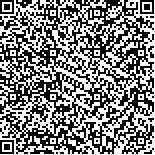| 本文已被:浏览 344次 下载 244次 |

码上扫一扫! |
| 新生儿感染耐碳青霉烯类革兰阴性菌呼吸机相关性肺炎的相关因素 |
| 董续艳1,王义乾1,丁月银1,程红斌1,李芝2,刘利2,王定成1 |
|
|
| (1. 黄石市妇幼保健院,湖北理工学院附属妇幼保健院,湖北黄石 435000;2. 鄂东医疗集团黄石市中心医院,湖北黄石 435000) |
|
| 摘要: |
| 目的:分析新生儿感染耐碳青霉烯类革兰阴性菌(CRGNB)呼吸机相关性肺炎(VAP) 的病原菌分布及危险因素。方法:
选取2018-2020 年黄石市妇幼保健院、黄石市中心医院收治的新生儿VAP 感染CRGNB 患儿75 例(CRGNB 组),另随机选取同
期同病房收治的新生儿VAP 感染碳青霉烯类敏感革兰阴性菌(CSGNB)患儿150 例为CSGNB 组,采用回顾性病例对照研究分
析CRGNB 感染的危险因素。结果:CRGNB 菌株以肺炎克雷伯菌、大肠埃希菌、鲍曼不动杆菌和铜绿假单胞菌等为主。CRGNB
组鲍曼不动杆菌构成比大于CSGNB 组,肺炎克雷伯菌构成比小于CSGNB 组( P 均<0. 05)。单因素分析显示,CRGNB 组与
CSGNB 组在新生儿出生体质量<1 500 g、1 min Apgar 评分<7 分、机械通气时间>14 d、累积抗菌药物用药≥3 种、抗菌药物用药
时间>14 d 和孕产妇产前3 个月住院史、产前3 个月广谱抗菌药物用药史比较差异有统计学意义(P 均<0. 05)。多因素logistic
回归分析显示,新生儿出生体质量<1 500 g( OR = 2. 04)、机械通气时间>14 d( OR = 2. 37)、抗菌药物联合用药≥3 种( OR =
2. 11)、抗菌药物用药时间>14 d(OR=2. 60)和孕妇产前3 个月广谱抗菌药物用药史(OR=1. 92)为新生儿VAP 感染CRGNB 的
独立危险因素。结论:新生儿VAP 感染GRGNB 与出生体质量、机械通气时间、联用抗菌药物种类、抗菌药物用药时间及孕妇产
前3 个月广谱抗菌药物用药史相关,临床应针对新生儿VAP 感染CRGNB 的危险因素及时进行干预。 |
| 关键词: 新生儿 呼吸机相关性肺炎 耐碳青霉烯类革兰阴性菌 危险因素 |
| DOI:10.13407/j.cnki.jpp.1672-108X.2023.03.010 |
|
| 基金项目: |
|
| The Risk Factors for Carbapenem-Resistant Gram-Negative Bacteria in Neonates with Ventilator-Associated Pneumonia |
| Dong Xuyan1, Wang Yiqian1, Ding Yueyin1, Cheng Hongbin1, Li Zhi2, Liu Li2, Wang Dingcheng1 |
| (1. Huangshi Maternity and Children’s Health Hospital, Affiliated Maternity and Children’s Health Hospital of Hubei Polytechnic University, Hubei Huangshi 435000, China; 2. Huangshi Central Hospital of Edong Medical Group, Hubei Huangshi 435000, China) |
| Abstract: |
| Objective: To analyze the pathogen distribution and risk factors for carbapenem-resistant gram-negative bacteria
(CRGNB) in neonates with ventilator-associated pneumonia (VAP). Methods: A total of 75 neonates with VAP caused by CRGNB
infection in Huangshi Maternal and Child Health Hospital and Huangshi Central Hospital from 2018 to 2020 were chosen as CRGNB
group, and 150 neonates with VAP caused by carbapenem-sensitive gram-negative bacteria (CSGNB) admitted to the same ward at the same time were randomly selected according to the ratio of 1 ∶ 2 as CSGNB group. Retrospective case-control study was conducted
to analyze the risk factors for CRGNB infection. Results: CRGNB strains were mainly Klebsiella pneumoniae, Escherichia coli,
Acinetobacter baumannii and Pseudomonas aeruginosa in neonates with VAP. The composition ratio of Acinetobacter baumannii in
CRGNB group was higher than that in CSGNB group, and that of Klebsiella pneumoniae was lower than that in CSGNB group (all P<
0. 05). Single factor analysis showed that there were statistically significant differences in low birth body mass (< 1,500 g), 1 min
Apgar score ( < 7 points), breathing machine ventilation time ( > 14 d), types of used antimicrobial agents ( ⩾ 3 kinds),
antimicrobial drug use time (>14 d) and prenatal hospitalization history and prenatal use history of broad-spectrum antibiotics before
3 months between CRGNB and CSGNB group (all P < 0. 05). Multivariate logistic regression analysis showed that newborn body
weight <1,500 g (OR=2. 04), ventilator ventilation time >14 d (OR=2. 37), types of used antimicrobial agents ⩾3 kinds (OR=
2. 11), antibiotics medication time >14 d (OR = 2. 60) and prenatal 3 months of broad-spectrum antibiotics (OR = 1. 92) were
independent risk factors for neonatal VAP infection with CRGNB. Conclusion: The incidence of GRGNB in neonates with VAP is
associated with birth weight, ventilation time, kinds of combined antibiotics, time of antibiotics administration and the prenatal
medication history of 3 months of broad-spectrum antibiotics. The clinical should timely take comprehensive prevention and control
measures according to the risk factors of neonatal VAP infected by CRGNB. |
| Key words: neonate ventilator-associated pneumonia carbapenem-resistant gram-negative bacteria risk factor |